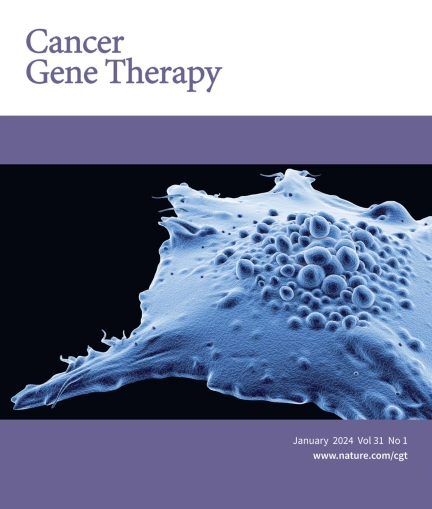Emerging roles of prohibitins in cancer: an update
IF 5
3区 医学
Q1 BIOTECHNOLOGY & APPLIED MICROBIOLOGY
引用次数: 0
Abstract
The prohibitin (PHB) family, including PHB1 and its homolog PHB2, is ubiquitously located in different cellular compartments and plays roles in fundamental cellular processes such as proliferation, differentiation, and apoptosis. Accumulating evidence has indicated that this family contributes to the development of numerous diseases in particular cancers. Aberrant expressions of PHBs can been observed in diverse types of human cancer. Depending on their cell compartment-specific attributes and interacting proteins, PHBs are tightly linked to almost all aspects of cancer biology and have distinct bidirectional functions of tumor-suppression or tumor-promotion. However, the roles of PHBs in cancer have yet to be fully characterized and understood. This review provides an updated overview of the pleiotropic effects of PHBs and emphasizes their characteristic roles in each cancer respectively, with the great expectation to identify potential targets for therapeutic approaches and promising molecular biomarkers for cancer diagnosis and prognostic monitor.

禁止药物在癌症中的新作用:最新进展。
禁止蛋白(PHB)家族,包括PHB1及其同源物PHB2,普遍存在于不同的细胞室中,并在增殖、分化和凋亡等基本细胞过程中发挥作用。越来越多的证据表明,这个家族导致了许多疾病的发展,尤其是癌症。PHBs的异常表达可以在不同类型的人类癌症中观察到。根据它们的细胞区室特异性属性和相互作用蛋白,phb与癌症生物学的几乎所有方面都紧密相关,并且具有肿瘤抑制或肿瘤促进的独特双向功能。然而,PHBs在癌症中的作用尚未得到充分的描述和理解。本文综述了PHBs的多效性,并强调了它们在每种癌症中的独特作用,以期找到潜在的治疗方法靶点和有希望的癌症诊断和预后监测分子生物标志物。
本文章由计算机程序翻译,如有差异,请以英文原文为准。
求助全文
约1分钟内获得全文
求助全文
来源期刊

Cancer gene therapy
医学-生物工程与应用微生物
CiteScore
10.20
自引率
0.00%
发文量
150
审稿时长
4-8 weeks
期刊介绍:
Cancer Gene Therapy is the essential gene and cellular therapy resource for cancer researchers and clinicians, keeping readers up to date with the latest developments in gene and cellular therapies for cancer. The journal publishes original laboratory and clinical research papers, case reports and review articles. Publication topics include RNAi approaches, drug resistance, hematopoietic progenitor cell gene transfer, cancer stem cells, cellular therapies, homologous recombination, ribozyme technology, antisense technology, tumor immunotherapy and tumor suppressors, translational research, cancer therapy, gene delivery systems (viral and non-viral), anti-gene therapy (antisense, siRNA & ribozymes), apoptosis; mechanisms and therapies, vaccine development, immunology and immunotherapy, DNA synthesis and repair.
Cancer Gene Therapy publishes the results of laboratory investigations, preclinical studies, and clinical trials in the field of gene transfer/gene therapy and cellular therapies as applied to cancer research. Types of articles published include original research articles; case reports; brief communications; review articles in the main fields of drug resistance/sensitivity, gene therapy, cellular therapy, tumor suppressor and anti-oncogene therapy, cytokine/tumor immunotherapy, etc.; industry perspectives; and letters to the editor.
 求助内容:
求助内容: 应助结果提醒方式:
应助结果提醒方式:


